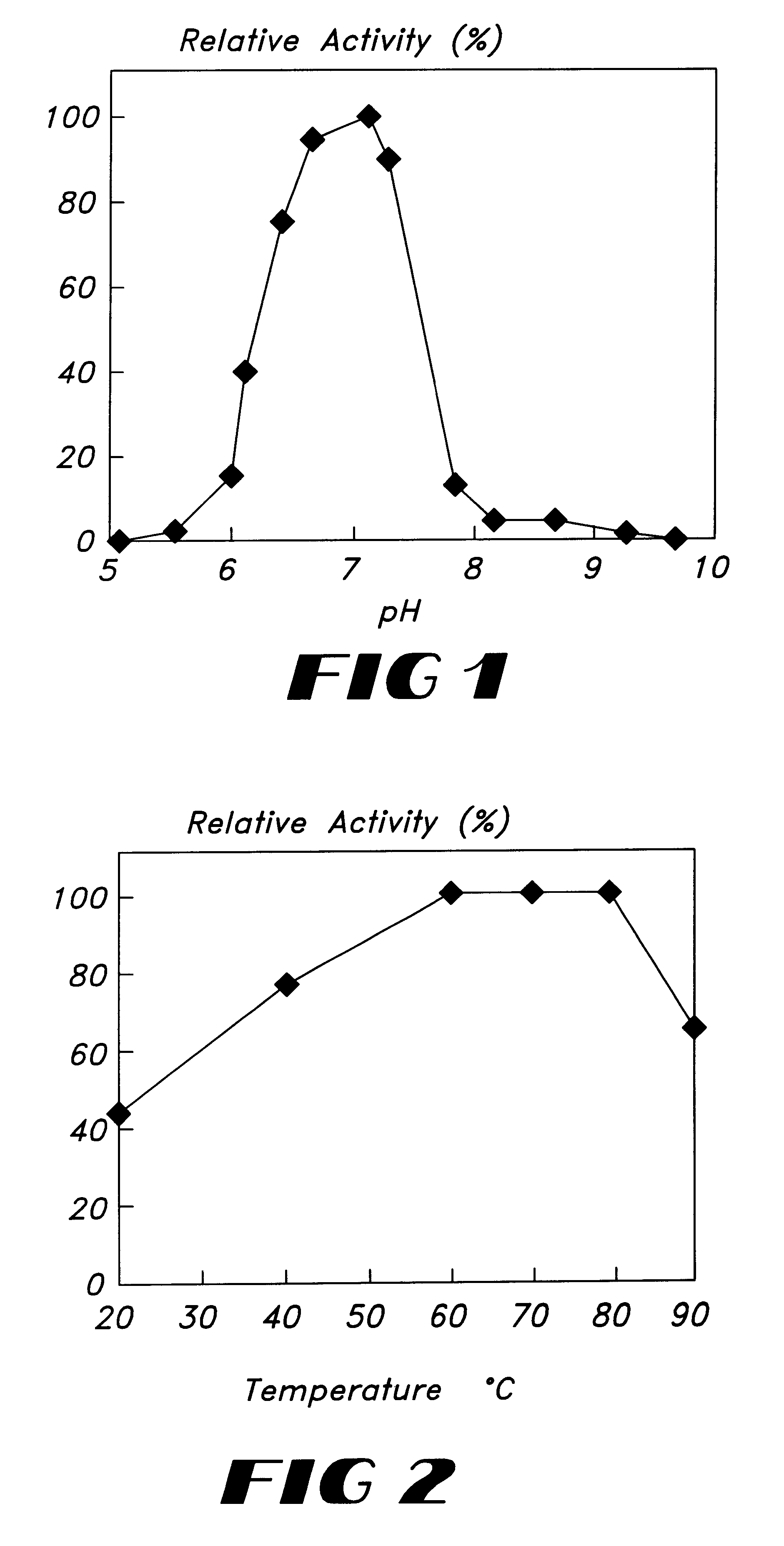Bacterial polyphenol oxidase from bacillus for use in oxidation of colored substances
a technology of polyphenol oxidase and bacillus, which is applied in the field of bacterial polyphenol oxidase from bacillus for use in the can solve the problems of difficult oxidation of colored substances, high rate of cell growth during cultivation, and large amount of such fungi cultivation, and achieves efficient oxidation of such substances.
- Summary
- Abstract
- Description
- Claims
- Application Information
AI Technical Summary
Benefits of technology
Problems solved by technology
Method used
Image
Examples
example 1
Cultivation, Crude Purification, Concentration
A 500-ml flask was used herein as the incubator. 100 ml of a medium comprising 0.134 Na.sub.2 HPO.sub.4.12-H.sub.2 O, 0.03 KH.sub.2 PO.sub.4, 1 maltose, 1 peptone, 0.1 yeast extract, 0.05 MgSO.sub.4.7-h.sub.2 O, 0.1 mM CuSO4, 1 mM MnCl.sub.2 and 2 mM CaCl.sub.2 was prepared and adjusted to pH 7.8 with 20% Na.sub.2 CO.sub.3 added thereto. Cells of Bacillus licheniformis SDB3003 (FERM P-15383) were inoculated on the medium, and incubated therein at 50.degree. C. for 16 hours while shaking. Then, tihe temperature of the medium was lowered to 35.degree. C., and the incubation was continued for further 3 days.
After the incubation, the culture was centrifuged at 4.degree. C. to remove the cells. Ammonium sulfate fractionation was found to be effective for purifying and concentrating the resulting culture broth. More specifically, the culture broth was fractionated with ammonium sulfate at from 20 to 60% of saturation concentration, and most of...
example 2
The aqueous, crudely-purified concentrate of the enzyme as obtained in the previous Example 1 was tested for the substrate specificity to the oxidation of polyphenol compounds. More specifically, thy enzyme concentrate was added to 0.05 mM of each substrate shown in Table 1 below, in 100 mM of Bis-Tris-HCl buffer (pH 7.0) at room temperature (20.degree. C.). The difference in the oxygen consumption between the test sample comprising the enzyme concentrate and the control sample not comprising it was determined. The results obtained are shown in the following Table.
example 3
Molecular Weight
The molecular weight of the enzyme prepared above was determined by GFC (gel filtration chromatography).
The aqueous, crudely-purified concentrate of the enzyme obtained in Example 1 was analyzed and fractionated by HPLC using a series of two GFC columns (Shodex PROTEIN KW-802.5) equilibrated with 1.34 Na.sub.2 PO.sub.4.12-H.sub.2 (, 0.3 KH.sub.2 PO.sub.4 and 1 NaCl at a flow rate of 1.0 ml / min using a UV detector (at 280 nm), and the activity of the fractionated enzyme was measured. As a result, the polyphenol oxidase activity peak was eluted within a molecular weight range of from 46,000 to 56,000. MW-Marker (HPLC) produced by Oriental Industrial Co. was used as molecular weight marker protein.
PUM
| Property | Measurement | Unit |
|---|---|---|
| temperature | aaaaa | aaaaa |
| temperature | aaaaa | aaaaa |
| pH | aaaaa | aaaaa |
Abstract
Description
Claims
Application Information
 Login to View More
Login to View More - R&D
- Intellectual Property
- Life Sciences
- Materials
- Tech Scout
- Unparalleled Data Quality
- Higher Quality Content
- 60% Fewer Hallucinations
Browse by: Latest US Patents, China's latest patents, Technical Efficacy Thesaurus, Application Domain, Technology Topic, Popular Technical Reports.
© 2025 PatSnap. All rights reserved.Legal|Privacy policy|Modern Slavery Act Transparency Statement|Sitemap|About US| Contact US: help@patsnap.com


